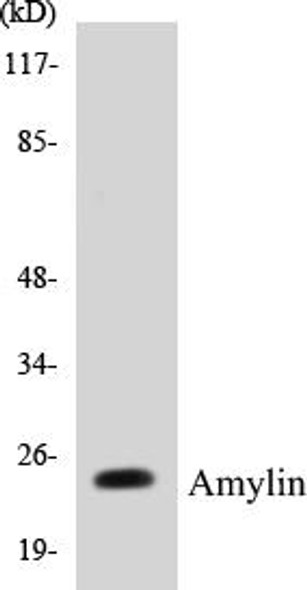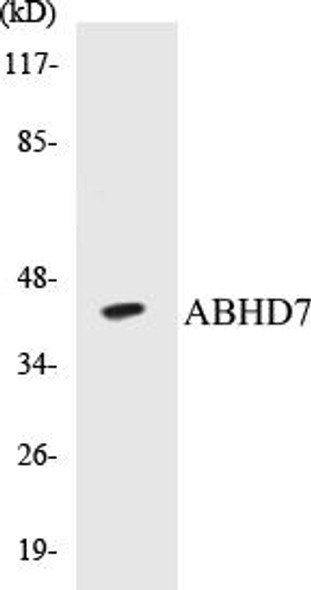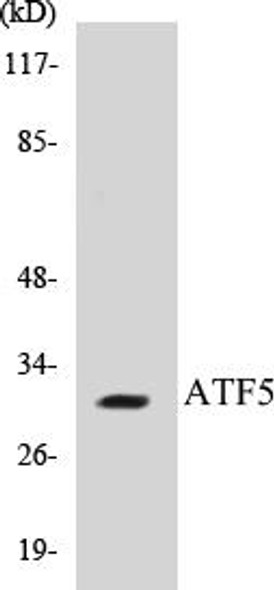Description
FKHRL1 Colorimetric Cell-Based ELISA Kit
The FKHR-L1 Colorimetric Cell-Based ELISA Kit is a cutting-edge tool designed for the accurate detection and quantification of FKHR-L1 levels in cell lysates and tissue samples. This kit offers high sensitivity and specificity, ensuring precise and reliable results for a variety of research applications.FKHR-L1, also known as FOXO3a, is a key transcription factor involved in regulating cellular processes such as apoptosis, cell cycle control, and oxidative stress response. Dysregulation of FKHR-L1 has been implicated in various diseases, including cancer, diabetes, and neurodegenerative disorders, highlighting its importance as a potential therapeutic target and biomarker.
With easy-to-follow protocols and a user-friendly format, the FKHR-L1 Colorimetric Cell-Based ELISA Kit is an indispensable tool for scientists and researchers looking to explore the role of FKHR-L1 in health and disease. Trust in this kit to provide accurate and reproducible data for advancing your research efforts.
| Product Name: | FKHRL1 Colorimetric Cell-Based ELISA Kit |
| Product Code: | CBCAB00302 |
| ELISA Type: | Cell-Based |
| Target: | FKHRL1 |
| Reactivity: | Human, Mouse, Rat |
| Dynamic Range: | > 5000 Cells |
| Detection Method: | Colorimetric 450 nmStorage/Stability:4°C/6 Months |
| Format: | 96-Well Microplate |
The FKHRL1 Colorimetric Cell-Based ELISA Kit is a convenient, lysate-free, high throughput and sensitive assay kit that can detect FKHRL1 protein expression profile in cells. The kit can be used for measuring the relative amounts of FKHRL1 in cultured cells as well as screening for the effects that various treatments, inhibitors (ie siRNA or chemicals), or activators have on FKHRL1.
Qualitative determination of FKHRL1 concentration is achieved by an indirect ELISA format. In essence, FKHRL1 is captured by FKHRL1-specific primary antibodies while the HRP-conjugated secondary antibodies bind the Fc region of the primary antibody. Through this binding, the HRP enzyme conjugated to the secondary antibody can catalyze a colorimetric reaction upon substrate addition. Due to the qualitative nature of the Cell-Based ELISA, multiple normalization methods are needed:
| 1. | A monoclonal antibody specific for human GAPDH is included to serve as an internal positive control in normalizing the target absorbance values. |
| 2. | Following the colorimetric measurement of HRP activity via substrate addition, the Crystal Violet whole-cell staining method may be used to determine cell density. After staining, the results can be analysed by normalizing the absorbance values to cell amounts, by which the plating difference can be adjusted. |
| Database Information: | Gene ID: 2309, UniProt ID: O43524, OMIM: 602681, Unigene: Hs.220950 |
| Gene Symbol: | FOXO3 |
| Sub Type: | None |
| UniProt Protein Function: | FOXO3A: a transcription factors of the forkhead family. Contains 1 fork-head domain. May regulate apoptosis through control of genes necessary for cell death. Translocation of this gene with the MLL gene is associated with secondary acute leukemia. |
| UniProt Protein Details: | Protein type:Oncoprotein; DNA-binding; Transcription factor; Autophagy Chromosomal Location of Human Ortholog: 6q21 Cellular Component: nucleoplasm; membrane; cytoplasm; cytosol; nucleus Molecular Function:protein binding; DNA binding; chromatin DNA binding; sequence-specific DNA binding; transcription factor activity; protein kinase binding Biological Process: epidermal growth factor receptor signaling pathway; transcription from RNA polymerase II promoter; phosphoinositide-mediated signaling; fibroblast growth factor receptor signaling pathway; DNA damage response, signal transduction by p53 class mediator; nerve growth factor receptor signaling pathway; initiation of primordial ovarian follicle growth; positive regulation of transcription, DNA-dependent; antral ovarian follicle growth; positive regulation of erythrocyte differentiation; negative regulation of transcription from RNA polymerase II promoter; glucose homeostasis; ovulation from ovarian follicle; oocyte maturation; regulation of translation; regulation of transcription from RNA polymerase II promoter; positive regulation of neuron apoptosis; innate immune response; positive regulation of transcription from RNA polymerase II promoter |
| NCBI Summary: | This gene belongs to the forkhead family of transcription factors which are characterized by a distinct forkhead domain. This gene likely functions as a trigger for apoptosis through expression of genes necessary for cell death. Translocation of this gene with the MLL gene is associated with secondary acute leukemia. Alternatively spliced transcript variants encoding the same protein have been observed. [provided by RefSeq, Jul 2008] |
| UniProt Code: | O43524 |
| NCBI GenInfo Identifier: | 8134467 |
| NCBI Gene ID: | 2309 |
| NCBI Accession: | O43524.1 |
| UniProt Secondary Accession: | O43524,O15171, Q5T2I7, Q9BZ04, B4DVZ6, E1P5E6, |
| UniProt Related Accession: | O43524 |
| Molecular Weight: | |
| NCBI Full Name: | Forkhead box protein O3 |
| NCBI Synonym Full Names: | forkhead box O3 |
| NCBI Official Symbol: | FOXO3 |
| NCBI Official Synonym Symbols: | FOXO2; AF6q21; FKHRL1; FOXO3A; FKHRL1P2 |
| NCBI Protein Information: | forkhead box protein O3; forkhead box O3A; forkhead in rhabdomyosarcoma-like 1; forkhead homolog (rhabdomyosarcoma) like 1; forkhead, Drosophila, homolog of, in rhabdomyosarcoma-like 1 |
| UniProt Protein Name: | Forkhead box protein O3 |
| UniProt Synonym Protein Names: | AF6q21 protein; Forkhead in rhabdomyosarcoma-like 1 |
| Protein Family: | Forkhead box protein |
| UniProt Gene Name: | FOXO3 |
| UniProt Entry Name: | FOXO3_HUMAN |
| Component | Quantity |
| 96-Well Cell Culture Clear-Bottom Microplate | 2 plates |
| 10X TBS | 24 mL |
| Quenching Buffer | 24 mL |
| Blocking Buffer | 50 mL |
| 15X Wash Buffer | 50 mL |
| Primary Antibody Diluent | 12 mL |
| 100x Anti-Phospho Target Antibody | 60 µL |
| 100x Anti-Target Antibody | 60 µL |
| Anti-GAPDH Antibody | 60 µL |
| HRP-Conjugated Anti-Rabbit IgG Antibody | 12 mL |
| HRP-Conjugated Anti-Mouse IgG Antibody | 12 mL |
| SDS Solution | 12 mL |
| Stop Solution | 24 mL |
| Ready-to-Use Substrate | 12 mL |
| Crystal Violet Solution | 12 mL |
| Adhesive Plate Seals | 2 seals |
The following materials and/or equipment are NOT provided in this kit but are necessary to successfully conduct the experiment:
- Microplate reader able to measure absorbance at 450 nm and/or 595 nm for Crystal Violet Cell Staining (Optional)
- Micropipettes with capability of measuring volumes ranging from 1 µL to 1 ml
- 37% formaldehyde (Sigma Cat# F-8775) or formaldehyde from other sources
- Squirt bottle, manifold dispenser, multichannel pipette reservoir or automated microplate washer
- Graph paper or computer software capable of generating or displaying logarithmic functions
- Absorbent papers or vacuum aspirator
- Test tubes or microfuge tubes capable of storing ≥1 ml
- Poly-L-Lysine (Sigma Cat# P4832 for suspension cells)
- Orbital shaker (optional)
- Deionized or sterile water
*Note: Protocols are specific to each batch/lot. For the correct instructions please follow the protocol included in your kit.
| Step | Procedure |
| 1. | Seed 200 µL of 20,000 adherent cells in culture medium in each well of a 96-well plate. The plates included in the kit are sterile and treated for cell culture. For suspension cells and loosely attached cells, coat the plates with 100 µL of 10 µg/ml Poly-L-Lysine (not included) to each well of a 96-well plate for 30 minutes at 37°C prior to adding cells. |
| 2. | Incubate the cells for overnight at 37°C, 5% CO2. |
| 3. | Treat the cells as desired. |
| 4. | Remove the cell culture medium and rinse with 200 µL of 1x TBS, twice. |
| 5. | Fix the cells by incubating with 100 µL of Fixing Solution for 20 minutes at room temperature. The 4% formaldehyde is used for adherent cells and 8% formaldehyde is used for suspension cells and loosely attached cells. |
| 6. | Remove the Fixing Solution and wash the plate 3 times with 200 µL 1x Wash Buffer for five minutes each time with gentle shaking on the orbital shaker. The plate can be stored at 4°C for a week. |
| 7. | Add 100 µL of Quenching Buffer and incubate for 20 minutes at room temperature. |
| 8. | Wash the plate 3 times with 1x Wash Buffer for 5 minutes each time. |
| 9. | Add 200 µL of Blocking Buffer and incubate for 1 hour at room temperature. |
| 10. | Wash 3 times with 200 µL of 1x Wash Buffer for 5 minutes each time. |
| 11. | Add 50 µL of 1x primary antibodies (Anti-FKHRL1 Antibody and/or Anti-GAPDH Antibody) to the corresponding wells, cover with Parafilm and incubate for 16 hours (overnight) at 4°C. If the target expression is known to be high, incubate for 2 hours at room temperature. |
| 12. | Wash 3 times with 200 µL of 1x Wash Buffer for 5 minutes each time. |
| 13. | Add 50 µL of 1x secondary antibodies (HRP-Conjugated AntiRabbit IgG Antibody or HRP-Conjugated Anti-Mouse IgG Antibody) to corresponding wells and incubate for 1.5 hours at room temperature. |
| 14. | Wash 3 times with 200 µL of 1x Wash Buffer for 5 minutes each time. |
| 15. | Add 50 µL of Ready-to-Use Substrate to each well and incubate for 30 minutes at room temperature in the dark. |
| 16. | Add 50 µL of Stop Solution to each well and read OD at 450 nm immediately using the microplate reader. |
(Additional Crystal Violet staining may be performed if desired – details of this may be found in the kit technical manual.)






